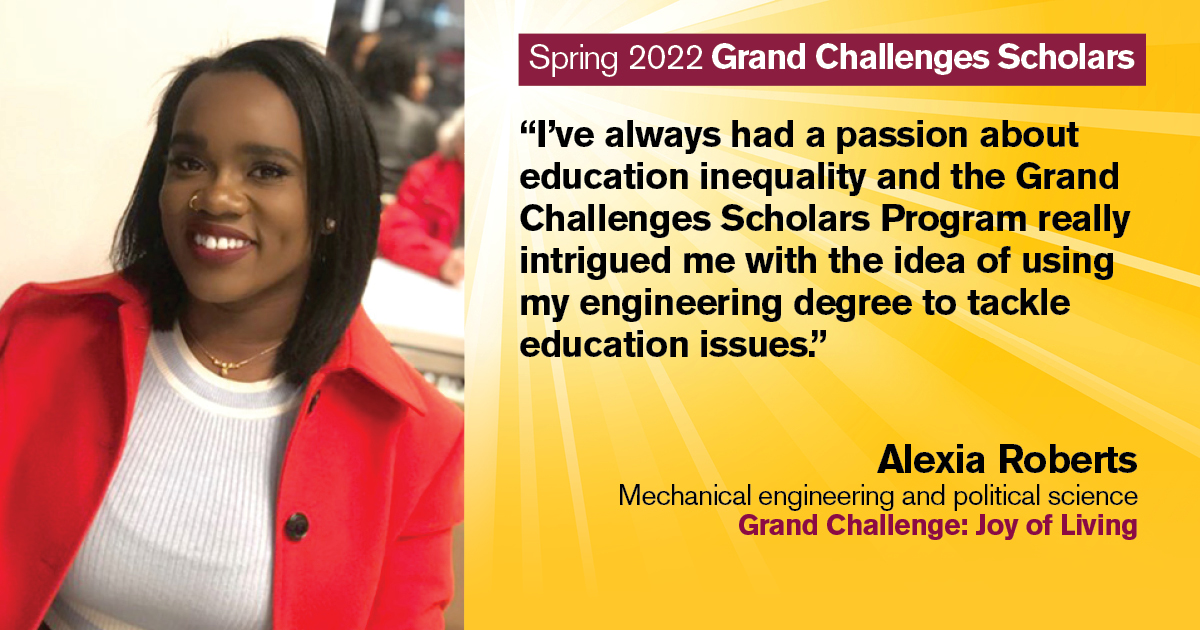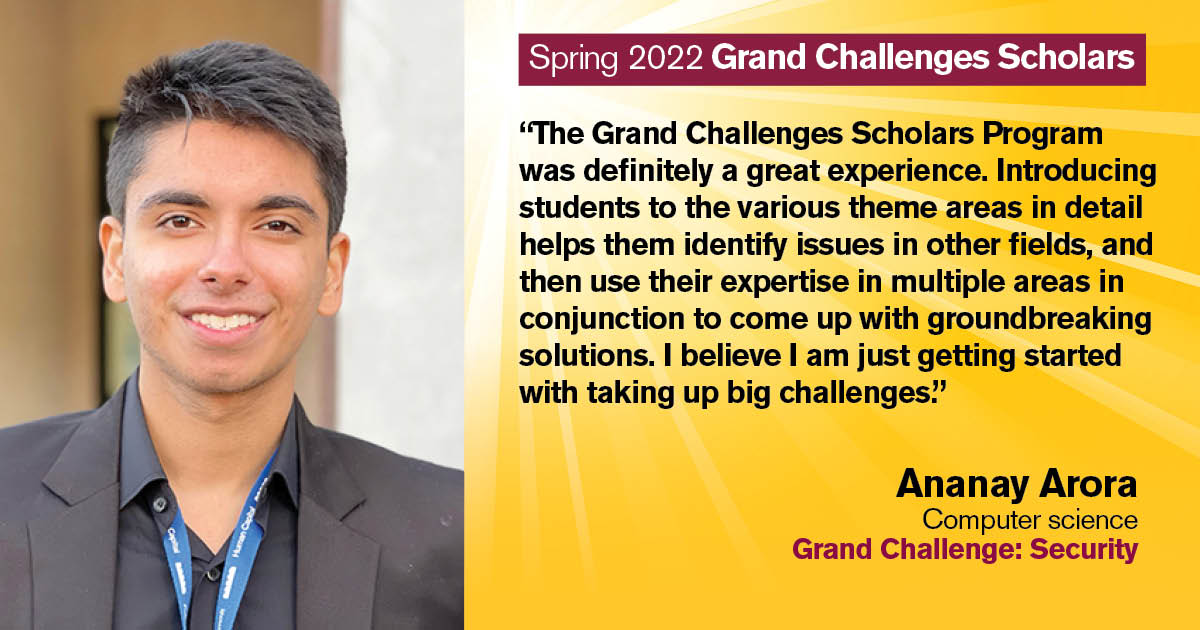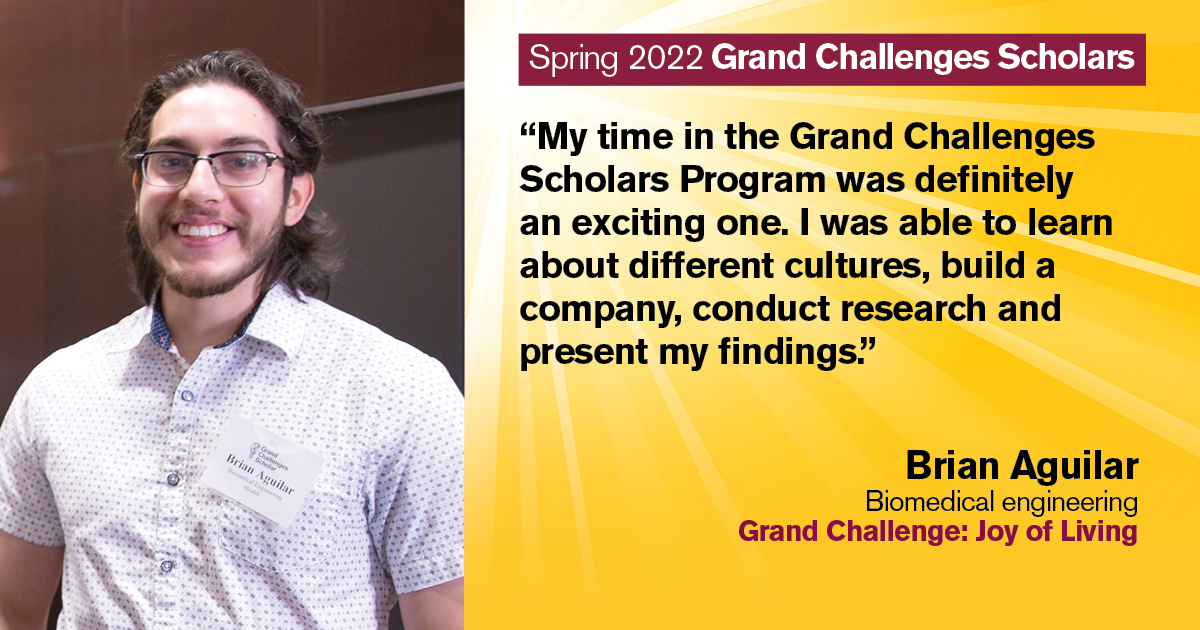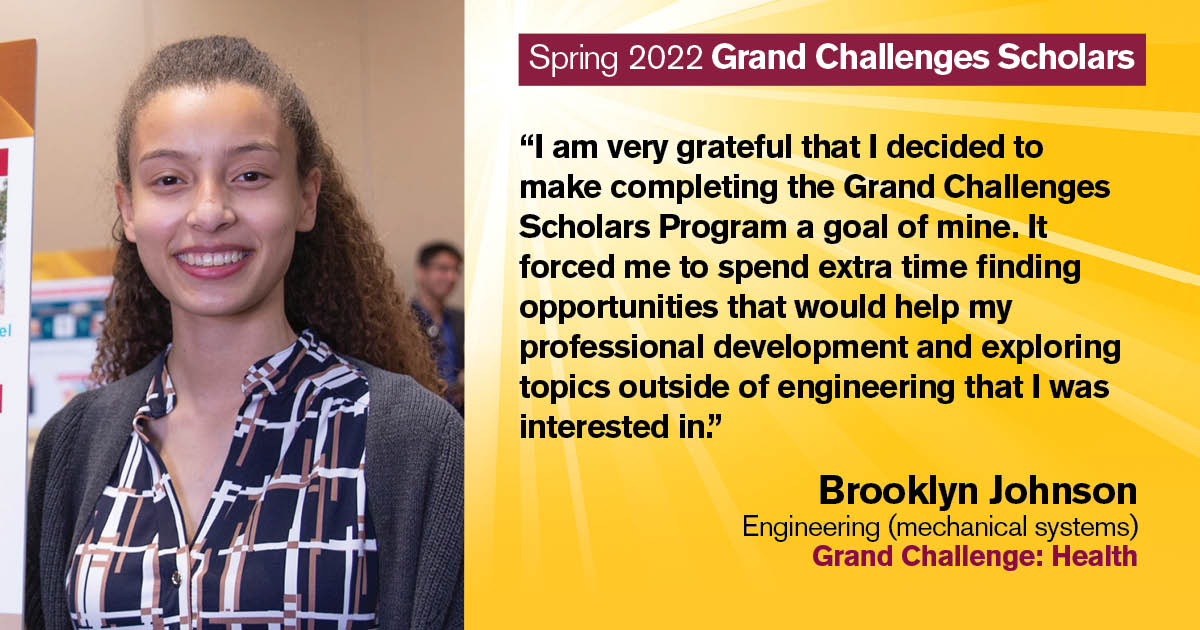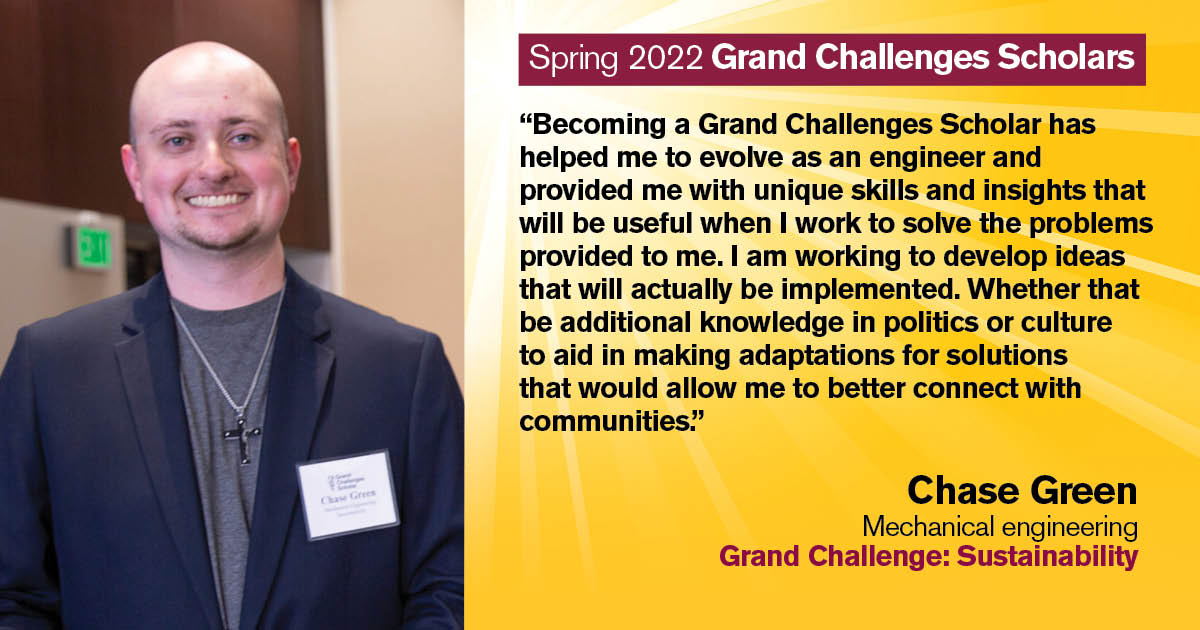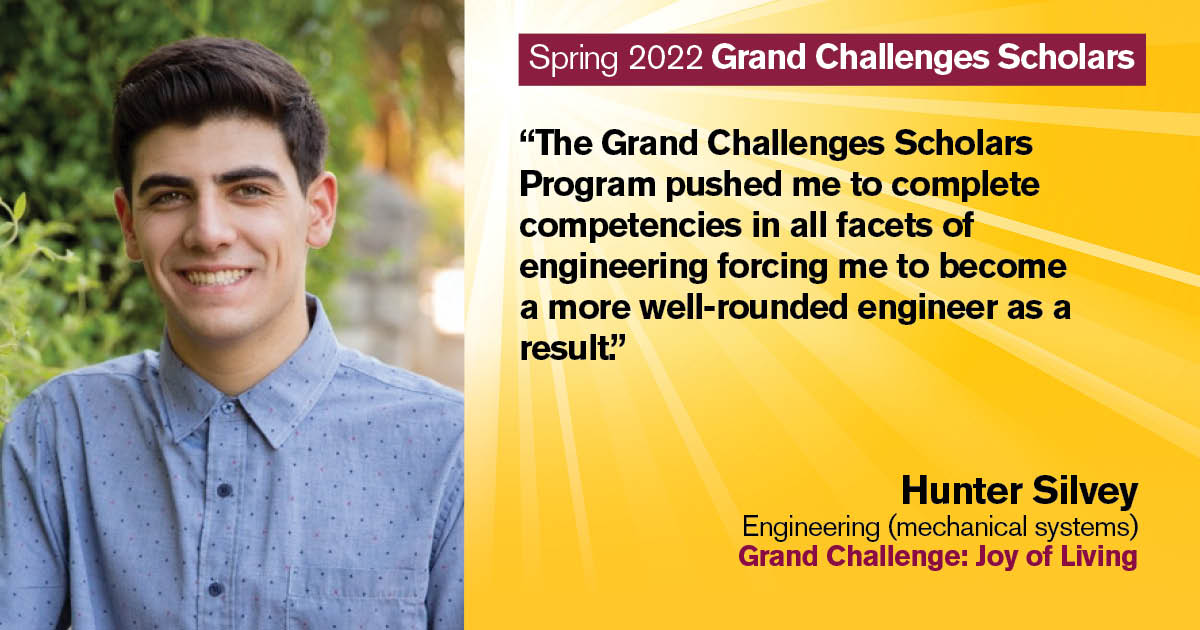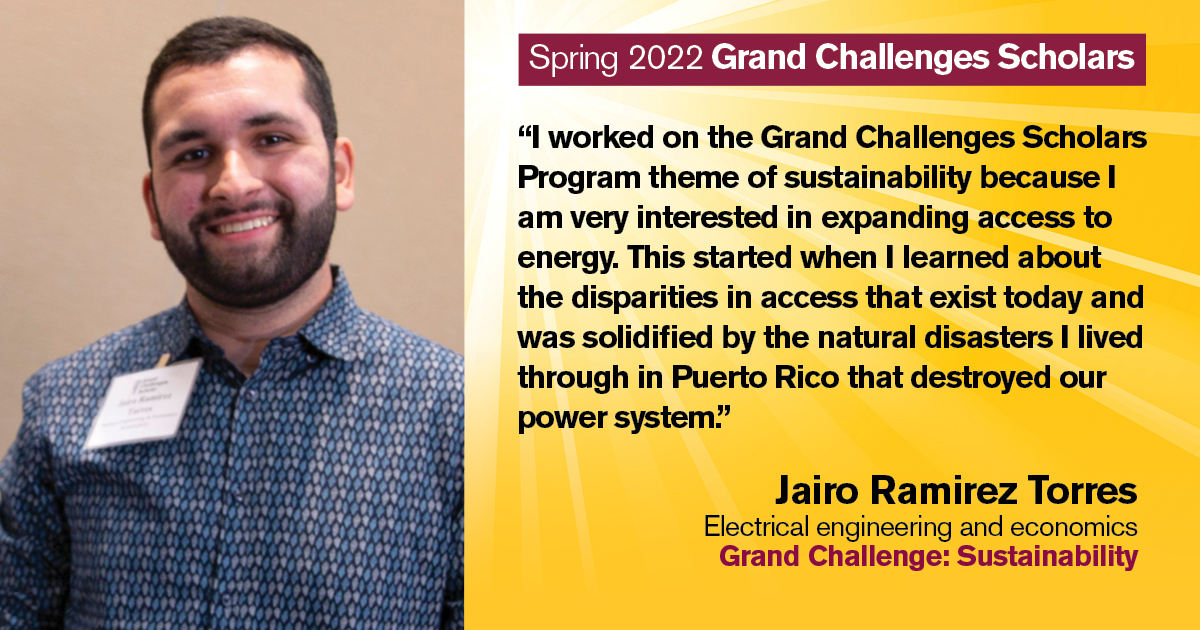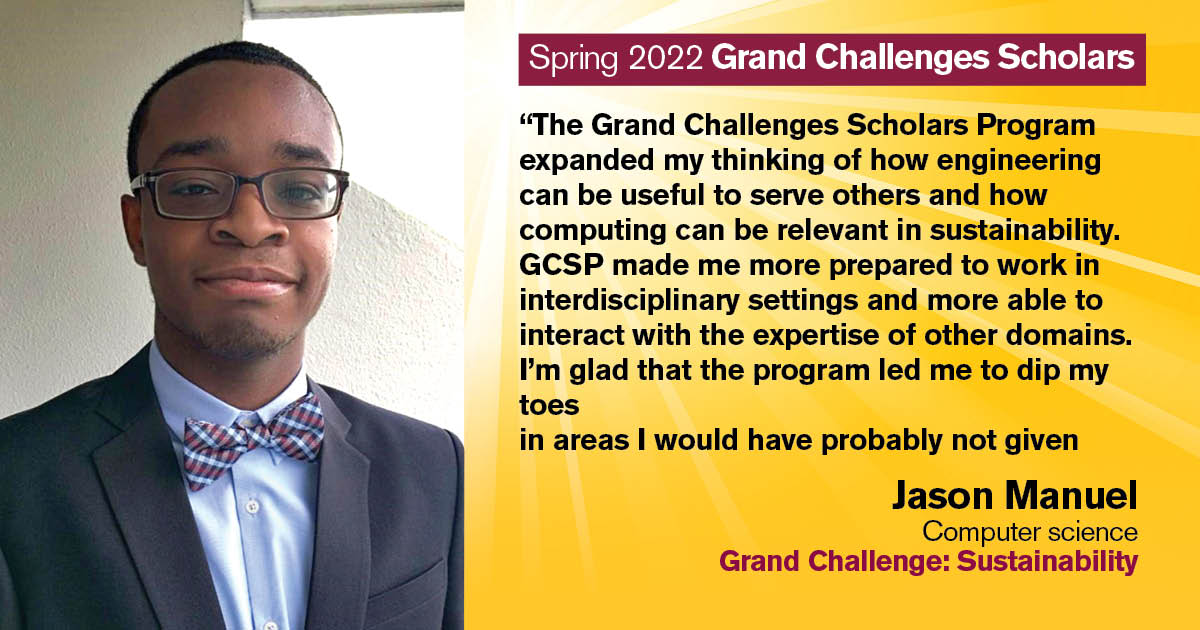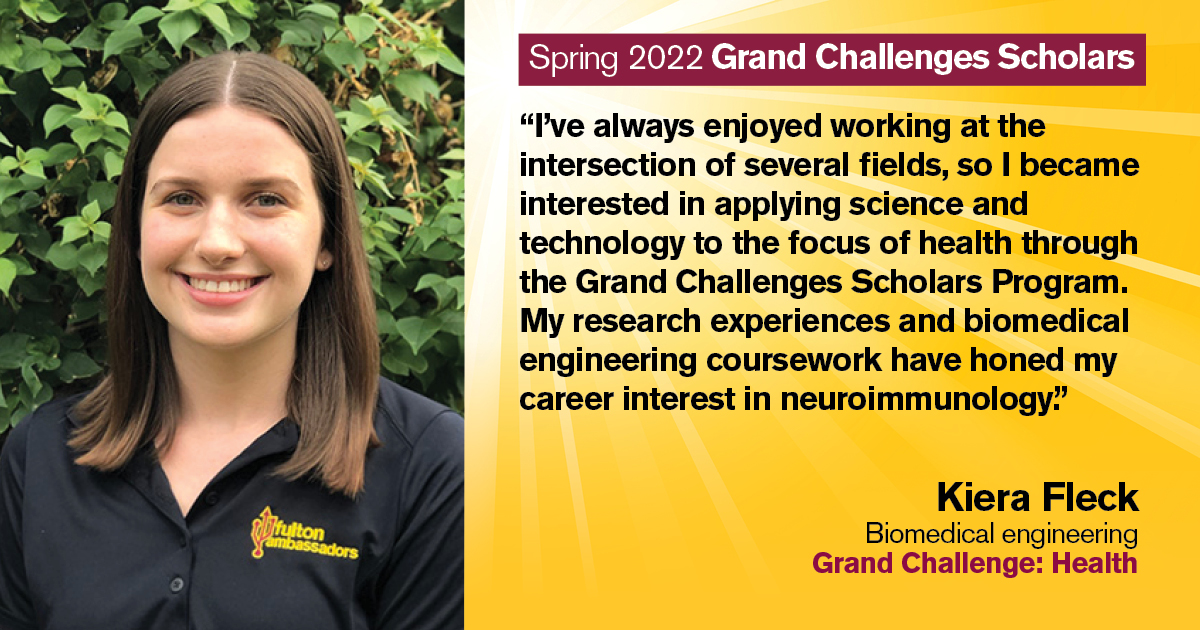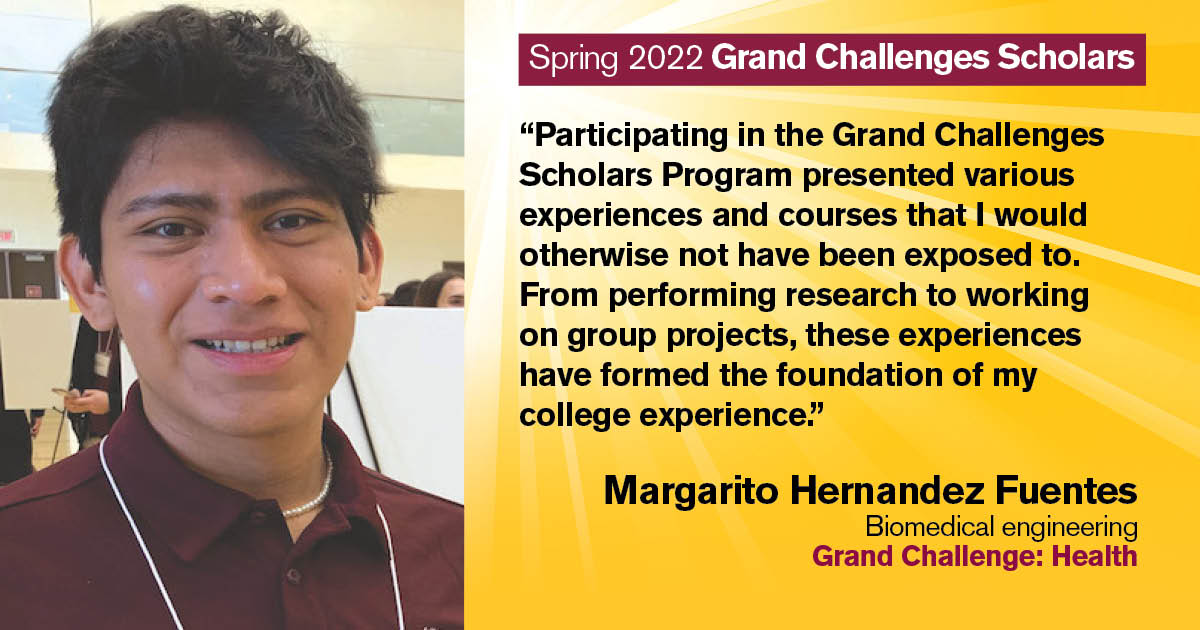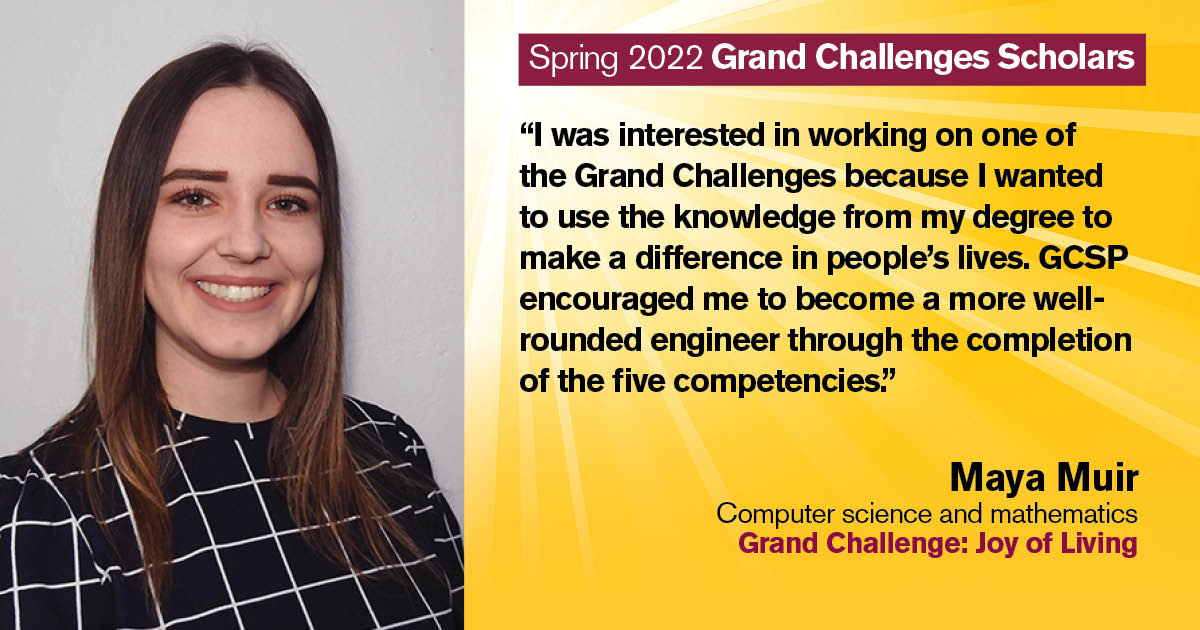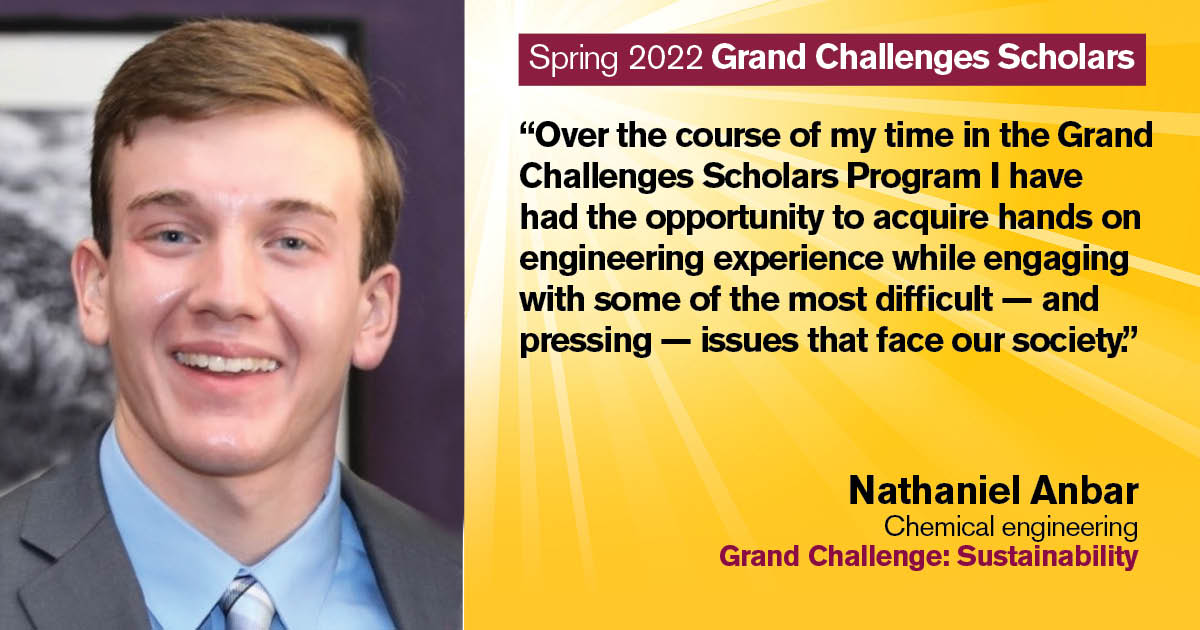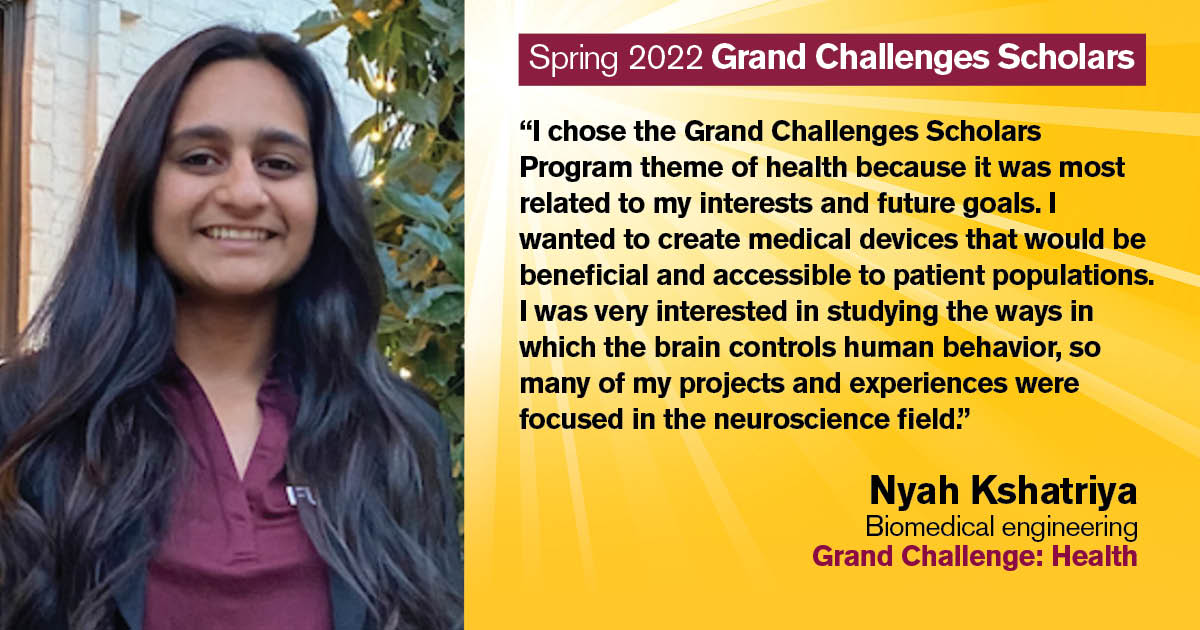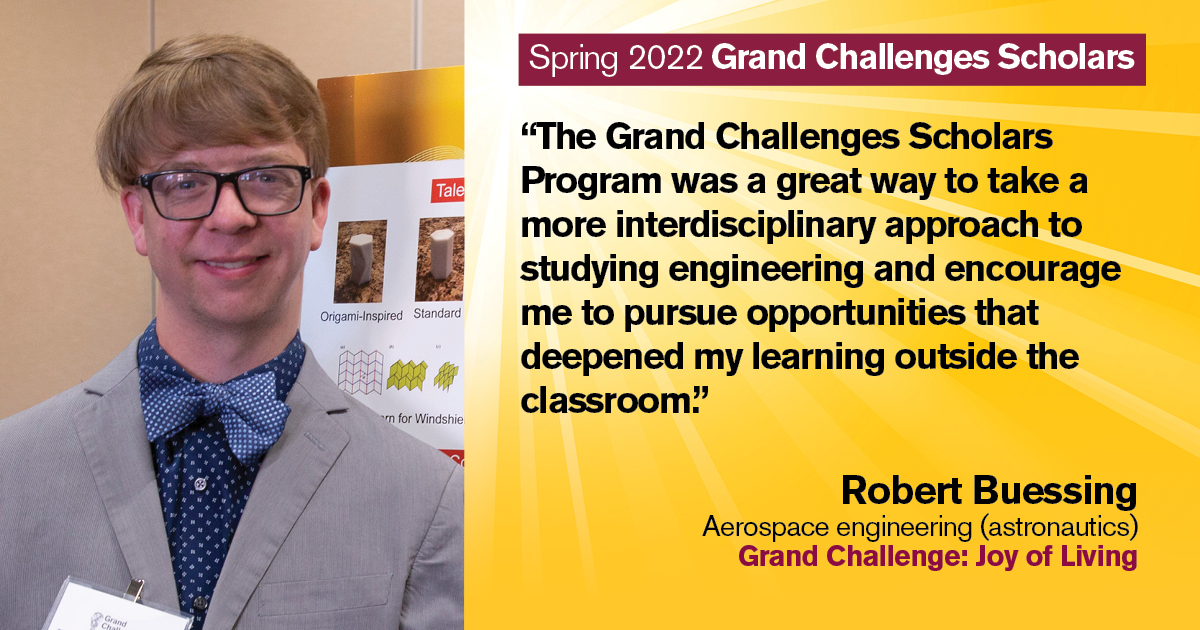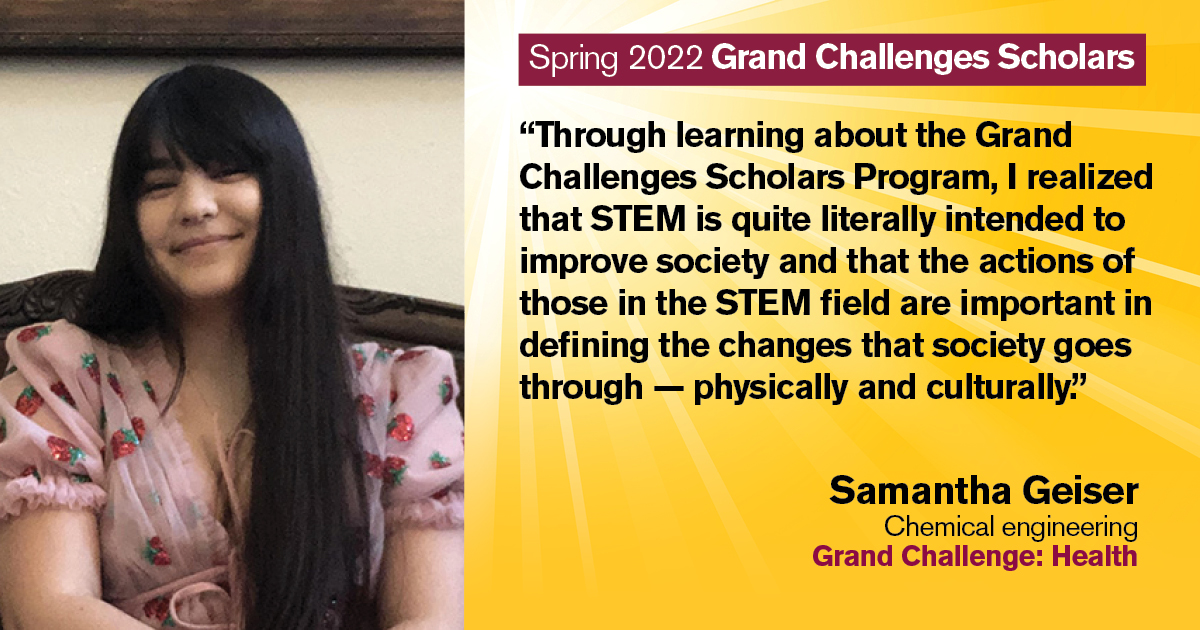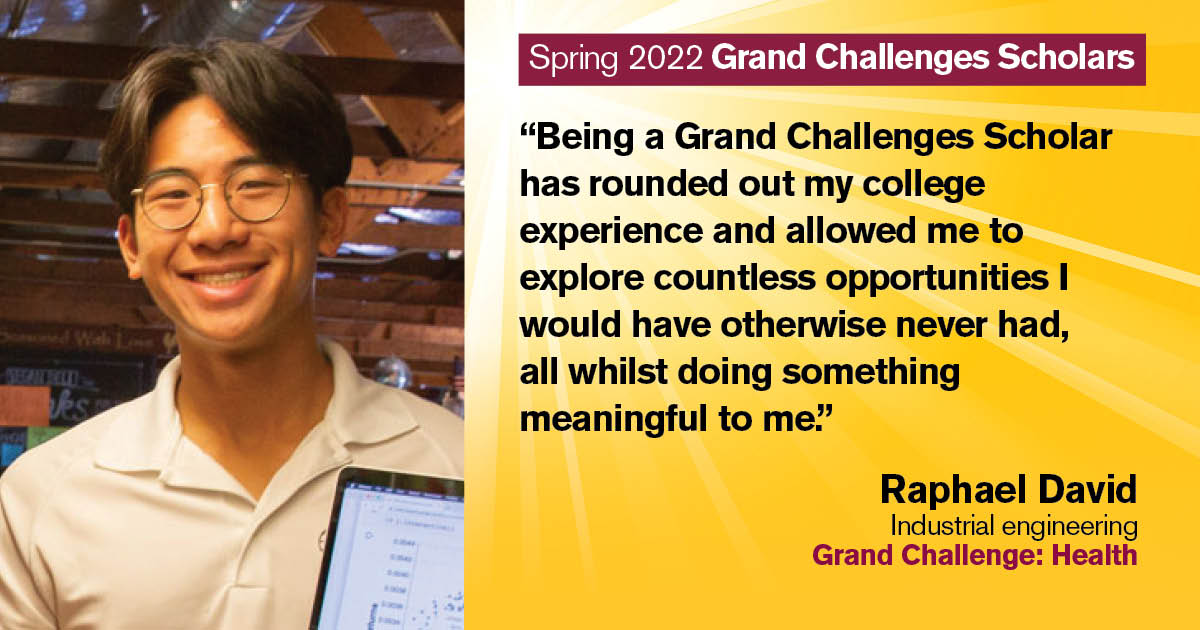
ASU celebrates largest cohort of Grand Challenges Scholars

The Grand Challenges Scholars Program encourages students to diversify their academic journey beyond engineering to include studies of culture, ethics, policy, human behavior, entrepreneurship and other disciplines. This can lead to students completing multiple majors or minors, in addition to their engineering degrees.
Known as GCSP, the program is offered by the Ira A. Fulton Schools of Engineering at Arizona State University and allows students to address global concerns through competencies that impart an ability to consider all aspects of a problem and generate solutions to benefit society.
“The outcomes and future paths of our graduates is diverse this year,” says Amy Trowbridge, faculty director of ASU’s Grand Challenges Scholars Program and a senior lecturer in the Fulton Schools. “Some of our graduates are continuing their studies in economics, policy and law, while others will pursue graduate degrees in engineering fields or begin their working careers in industry. Their engineering degrees and experiences in the Grand Challenges Scholars Program have prepared them to be successful in any field they choose.”
A cohort of 21 Grand Challenges Scholars is graduating from the Fulton Schools this spring. The group is the largest yet from the program, which continues to grow and strengthen the ASU community.
“This group of students is ambitious, hardworking, intelligent and extremely resilient,” says Trowbridge. “Despite experiencing changes in study abroad and other plans due to the COVID-19 pandemic, these students persisted in their GCSP journeys and are now graduating as the best of the best.”
To become a part of the Grand Challenges Scholars community students must exhibit five competencies through research or a creative project, multidisciplinary learning, entrepreneurship, multicultural experience and a service-learning project.
Search for educational equality
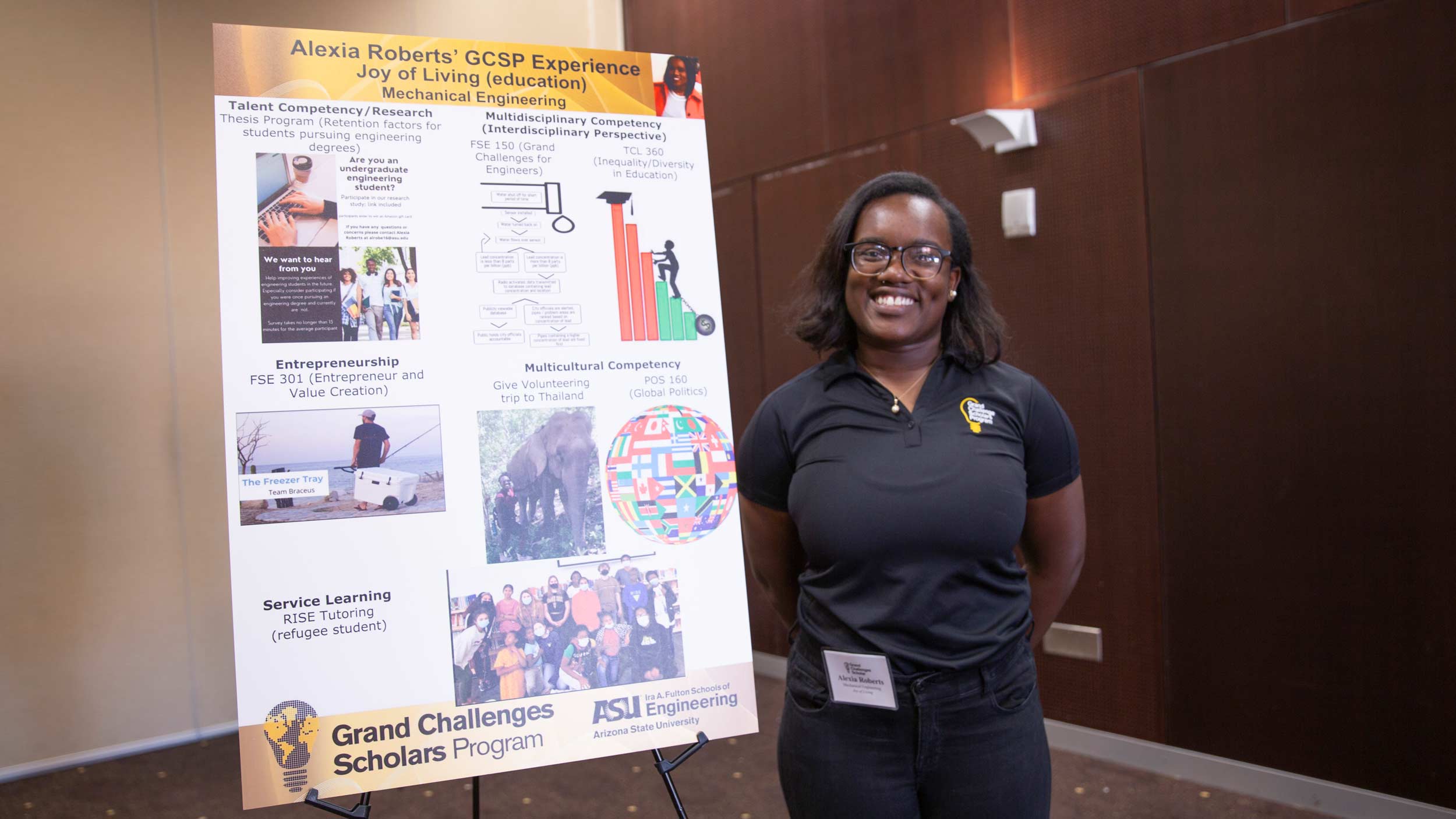
Grand Challenges Scholar Alexia Roberts will continue her academic career as a student at Harvard Law School. Photographer: Erika Gronek/ASU
Alexia Roberts, who is graduating with a Bachelor of Science in Engineering in mechanical engineering along with a Bachelor of Arts in political science from ASU’s College of Liberal Arts and Sciences, says she feels more students should participate in programs like GCSP.
“It allowed me to see engineering for more than just what I learned in class,” Roberts says. “I got practical knowledge and a broader understanding of ideas, not just words on paper. I’m excited to be graduating but saddened to say goodbye to my undergrad years.”
Roberts had never heard of GCSP before receiving an email from the program before she started her first semester at ASU.
“The email really intrigued me,” Roberts says. “The idea that I got to use my courses to make systemic impacts on major world problems was exactly what I wanted to do.”
Thanks to GCSP, Roberts became interested in government and how policies created 50 years ago still impact us today.
“GCSP gave me direction because it exposed me to a way of thinking and a degree program I might not have found otherwise,” she says. “Joining GCSP was one of the best things I did for myself when I started college. I know that a lot of programs and extracurriculars I joined during college were because of GCSP.”
Roberts, who will attend Harvard Law School in the fall, says she always had a passion for educational inequality and that GCSP allowed her to use engineering to tackle these issues.
“My main GCSP project was focusing on retention factors for Black women in engineering,” Roberts says. “I am a Black female and there are not many others in engineering programs, so I wanted to see why that was and how we can get more Black women into engineering programs and walk across the stage in four years. Equality is very important to me and that includes equality of opportunity, which is something that is currently not happening in [many] engineering courses across America.”
Re-energizing after nature strikes
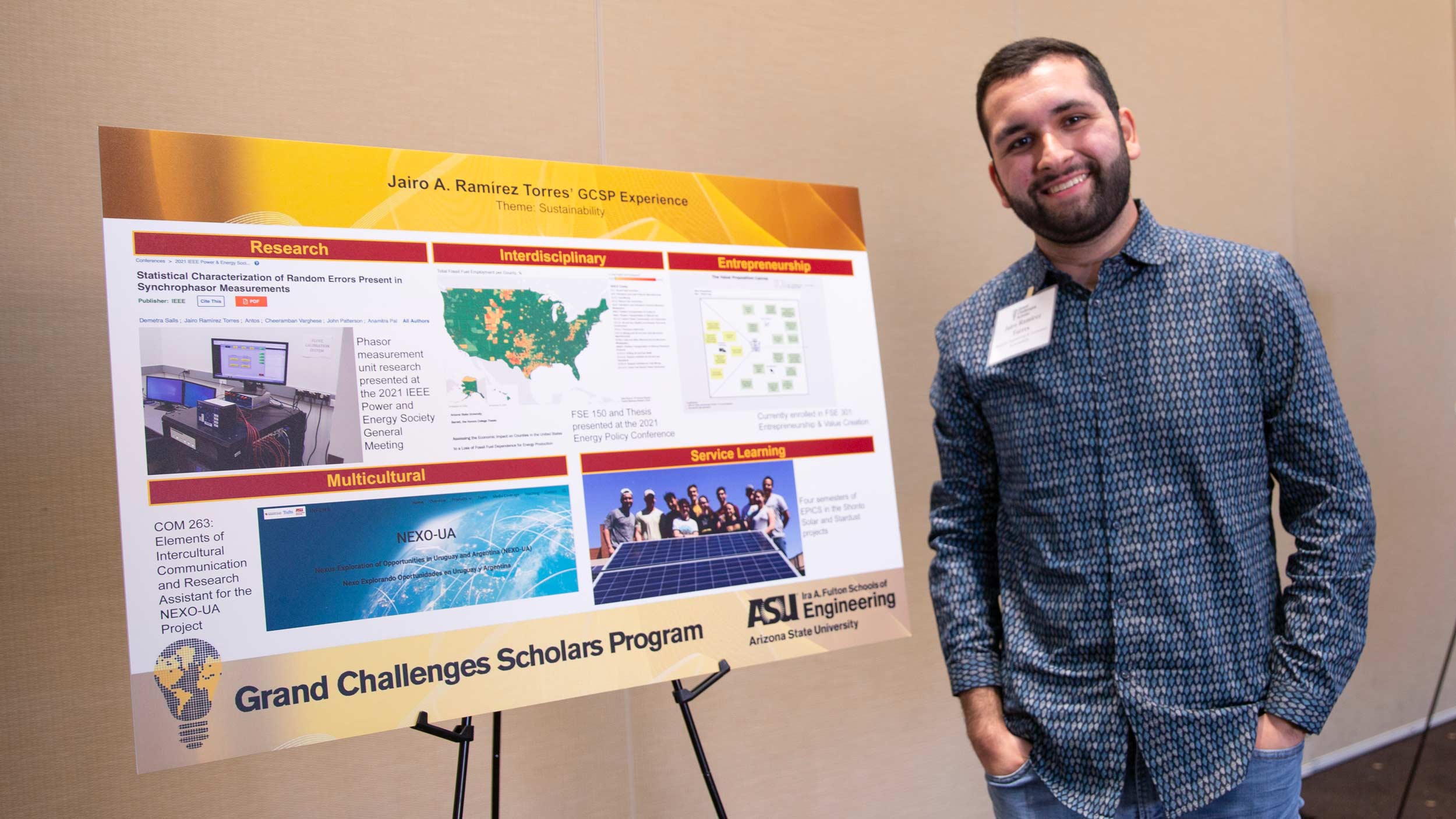
Grand Challenges Scholar Jairo Ramirez Torres will continue his academic career in the European Union’s Erasmus Mundus joint master’s program in Economics of Globalization and European Integration. Photographer: Erika Gronek/ASU
Jairo Ramirez Torres, who is graduating with a Bachelor of Science in Engineering in electrical engineering and a Bachelor of Science in economics from ASU’s College of Liberal Arts and Sciences, selected sustainability projects while in GCSP after a hurricane left his native Puerto Rico without power.
He says he is very interested in expanding energy access and had the opportunity to research power devices, learn about cultural differences in communication styles and work with a team of engineering students from Australia as part of his GCSP experiences.
“My interests in the field started as I learned first-hand about the disparities in access that exist today,” Ramirez Torres says. “It was solidified by the natural disasters I lived through in Puerto Rico that destroyed our power system and I felt a responsibility to contribute to building more resilient and sustainable energy infrastructure.”
The majority of the projects Ramirez Torres worked fell in the energy category.
“It is one of the areas I have much interest in,” Ramirez Torres says. “I hope to pursue a career that allows me to use both sides of my expertise, technical and non-technical.”
While working in the energy and environmental policy field is his goal, the next stop on his academic journey will take him to participate in the European Union’s Erasmus Mundus joint master’s degree program in Economics of Globalization and European Integration.
Technology in the shade
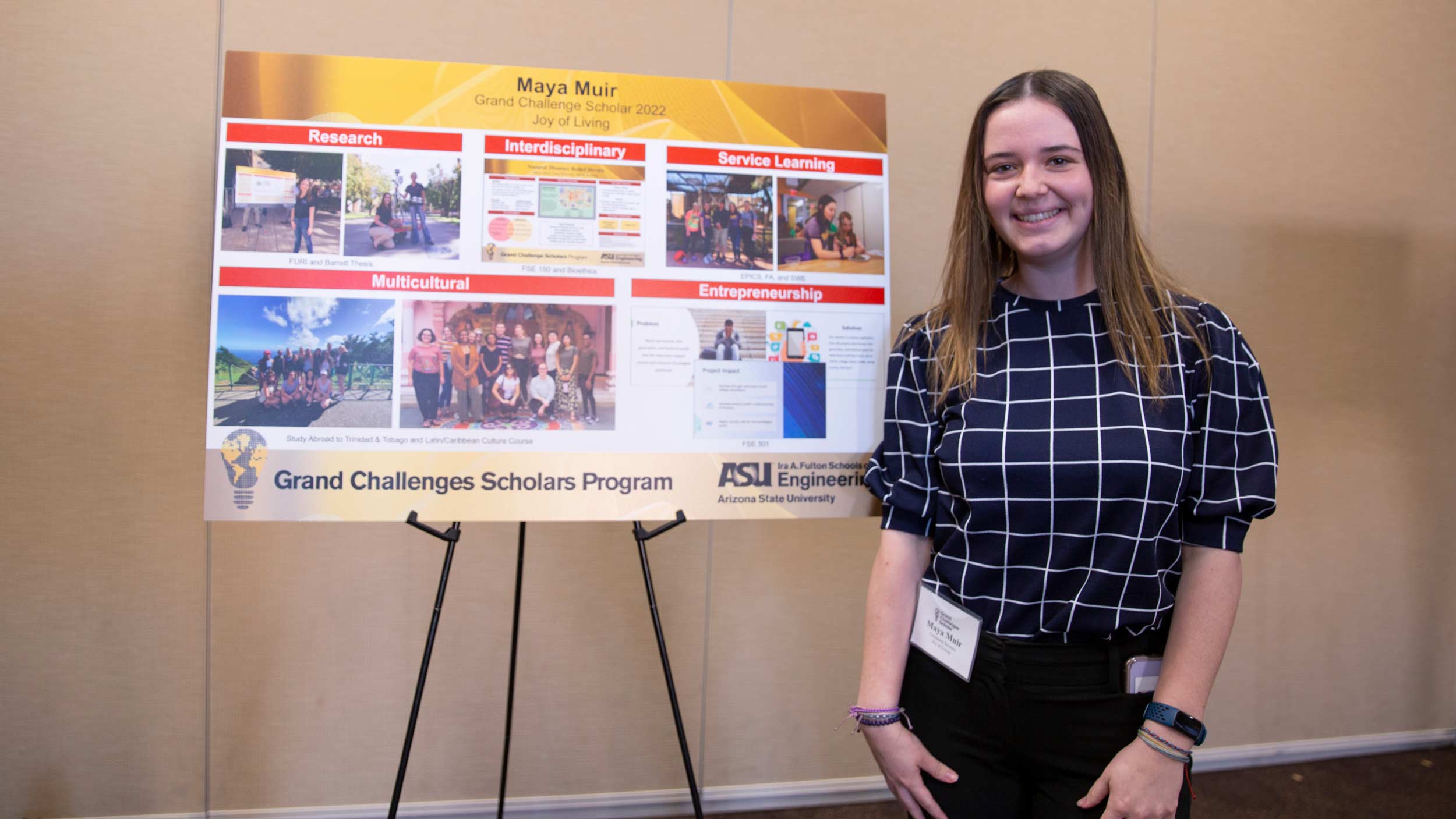
Grand Challenges Scholar Maya Muir will continue her academic career as a computer science master’s student in the Fulton Schools. Photographer: Erika Gronek/ASU
Maya Muir, who is graduating with a Bachelor of Science in computer science, as well as a Bachelor of Science in mathematics from ASU’s College of Liberal Arts and Sciences, first got involved in GCSP during her sophomore year.
“I was interested in working on one of the Grand Challenges because I wanted to use the knowledge from my degree to make a difference in people’s lives,” Muir says. “GCSP encouraged me to become a more well-rounded engineer through the completion of the five competencies.”
Muir’s research was shared in her honors thesis for Barrett, The Honors College and the Fulton Undergraduate Research Initiative, better known as FURI.
“I created a web-based tool that would allow urban city planners to evaluate how effective a shade structure would be in a given location,” Muir says. “This would allow them to choose the best shade type for the location where they want shade.”
Muir, who is also a Fulton Schools Outstanding Graduate this semester, chose her research project because climate change is an important issue to her.
“This project will help protect humans from the increasing temperatures we are experiencing and the results of it,” Muir says. “It also allowed me to explore data visualization, which is an area I am interested in.”
Sustainability in the face of climate change
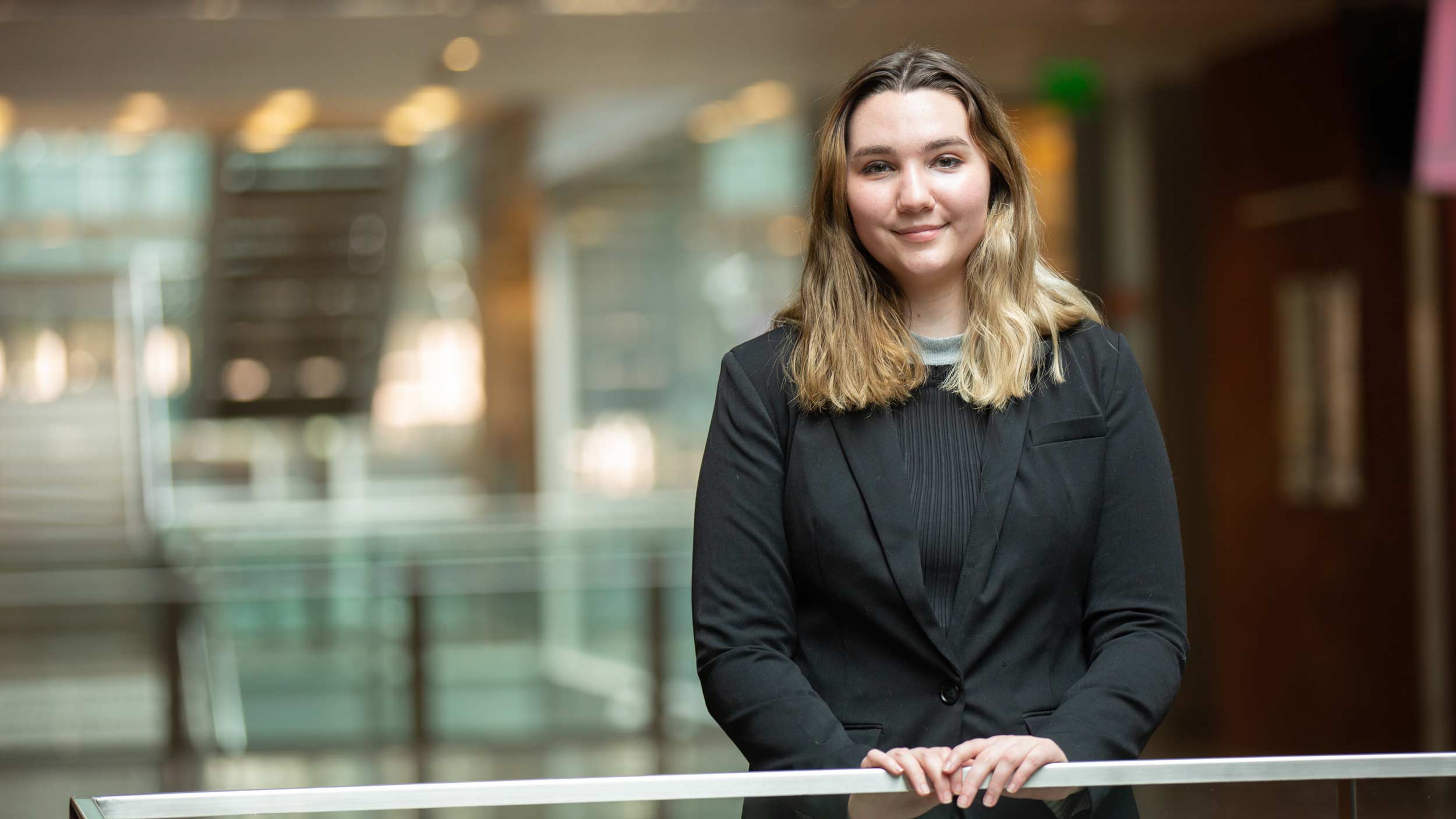
Grand Challenges Scholar Smith Pittman will continue her academic career as a mechanical engineering doctoral student at Colorado State University. Photographer: Erika Gronek/ASU
Smith Pittman, who is graduating with a Bachelor of Science in Engineering in environmental engineering along with a minor in Spanish from ASU’s College of Liberal Arts and Sciences, says that when she looks at where she started as a first-year student and where she is now, she is grateful that she had the experiences that she had in GCSP.
Pittman says she was specifically interested in being a socially aware engineer and wanted to influence the effects of environmental issues on marginalized communities versus affluent areas.
“Joining GCSP was an easy choice because I am really interested in sustainability,” Pittman says. “I think climate change is one of the most troublesome issues humanity faces and I have always wanted to study it.”
Pittman, who is also a Spring 2022 Fulton Schools Outstanding Graduate, reached out to ASU Regents Professor Bruce Rittman and asked to join his research group. He assigned her a project that would become her main research project and one she would share in her honors thesis for Barrett, The Honors College and FURI.
“The project evaluates improving valuable product recovery in anaerobic digestion through lignocellulose pretreatment with rabbit fecal matter,” Pittman says. “I am glad I was assigned this project because anaerobic digestion is of interest to me due to its ability to produce biofuels.”
Next, Pittman will continue her research in complete life cycle analysis of anaerobic digestion as a mechanical engineering doctoral student at Colorado State University.
“The connectivity between my experiences is sustainability, but not just of earth systems, of human systems as well,” Pittman says. “This is because humans are an integral part of the earth system and sustainability of both must be achieved for either to be achieved.”
A bright future ahead
This cohort of graduates had a large impact on the ASU community and beyond through the founding of new student organizations, mentoring students and developing solutions to improve local and global communities.
“GCSP provided an opportunity for them to be able to both explore what they are passionate about and venture outside of their comfort zones in some cases while gaining valuable experiences,” says Haolin Zhu, faculty director of ASU’s Grand Challenges Scholars Program and a senior lecturer in the Fulton Schools.
They will be recognized by the National Academy of Engineering as Grand Challenges Scholars, joining a community of more than 1,700 total GCSP alumni across the organization’s international network.
“These students are leaders and changemakers,” Trowbridge says. “We are excited to see the impact they each make in the future as they continue on their varied career paths.”































